Looking for new games to play with your kids? Get some ideas from these fun games that children play in Asia!
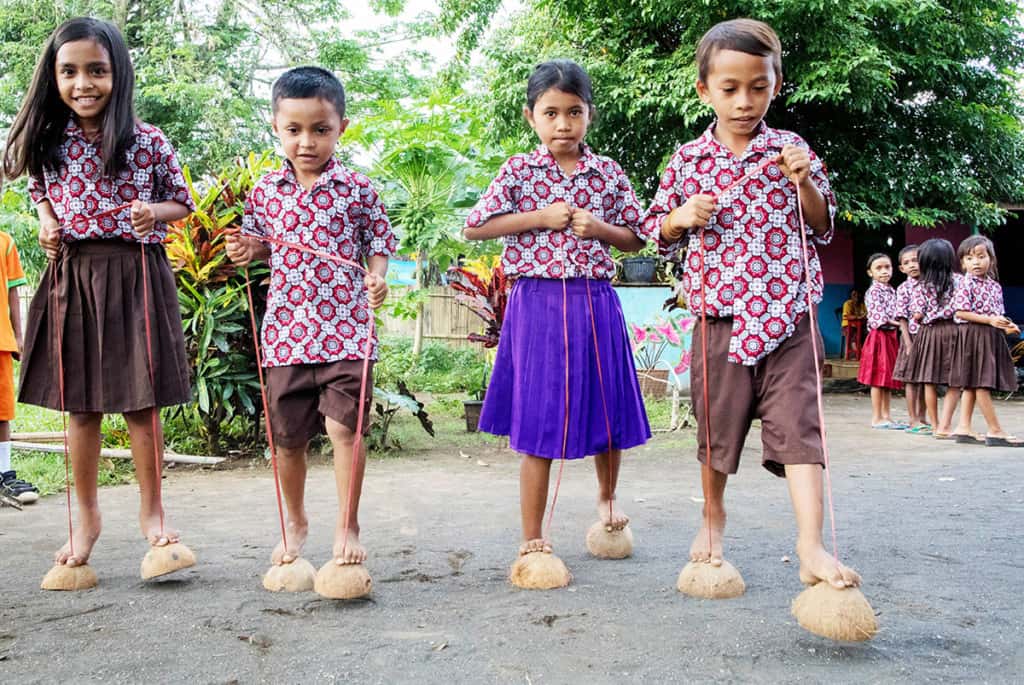
As a parent, it’s always fun to find new and creative ways to play with your kids! For me, activities that require minimal props and keep kids entertained are ideal.
So I started to wonder: What childhood games do kids play from different cultures?
In Asia, children in Compassion’s programs can’t afford the equipment required to play common local sports like cricket, soccer, badminton, volleyball and hockey.
Instead, they’ve found their own ways to have fun. Some children collect natural objects like rocks, bamboo branches or leaves and use their imaginations to shape them into toys. Other children use game equipment their parents or grandparents make by hand.
Games are an important part of Compassion’s holistic child development model. They encourage children to have fun and be active while teaching life skills like teamwork, communication, self-confidence and respect.
Traditional Asian Games Kids Play
The games children play at Compassion child development centers across Asia vary from country to country. Let’s take a look at some of them!
In Bangladesh, Children Play …
Chenti benti: All you need for this game is two sticks, one about 6-7 inches long and the other about a foot long. Make a hole in the ground about 2 inches deep and place the shorter stick above the hole so that it hangs over the edge.
Then hit the shorter stick with the longer stick as hard as you can! The person who flips the stick the farthest wins.
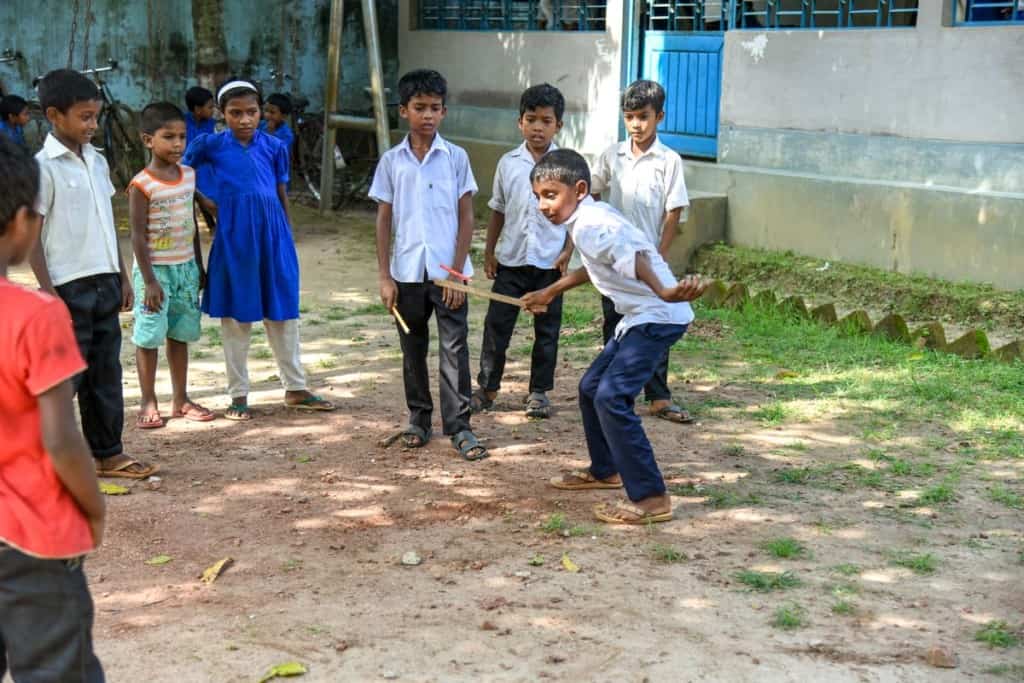
Golla choot: This game is best played with 10-15 children. Three players make a chain by holding hands. One person is the anchor in the chain and must always keep one foot in a circle.
The chain tries to catch the other children without letting go of each other and without the anchor’s foot leaving the circle. Each time they catch another child, the child is added to the chain until only one remains.
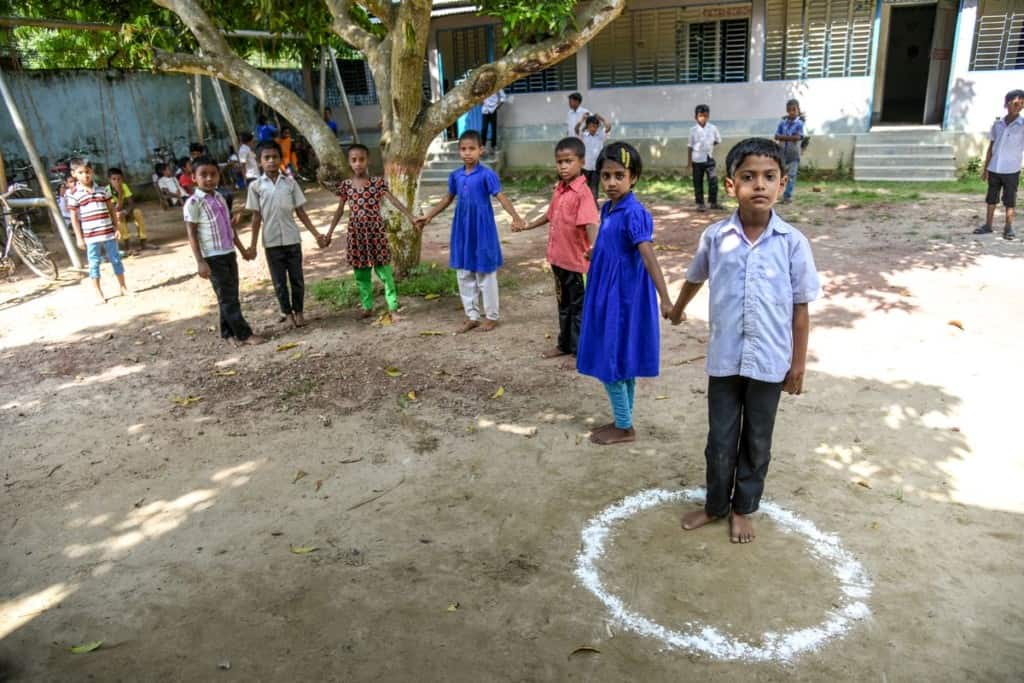
In the Philippines, Children Play …
Tumbang preso: The name of this game literally means “knock the prisoner down,” and you only need an empty tin can and sandals to play. One person is “it” and stands up the tin can.
The other players stand behind a line and throw their sandals to try to knock down the can. Then, they must run in to get their sandals back. The person who is “it” first must stand up the tin can and try to tag another player to become the next “it” before those players can run back to safety behind the line.

Patintero: This traditional game is considered the most popular game in the Philippines. It’s played on a rectangular grid that is divided into four or six parts, depending on the number of players.
The goal is for the offensive team to cross the length of the rectangle and back without getting tagged by the defensive team. Usually, each tagger on the defensive team is assigned a crosswise line.
They can tag runners at any time, including those already past them, if both their feet stay on the lines. If someone is tagged, the teams change position.

HOW TO PLAY PATINTERO: Step-by-step rules and a video from Compassion Explorer Magazine.
In Thailand, Children Play …
Boe-thor: Children of the Karen tribe often play a game that reflects their tribe’s hunter-gatherer traditions. It involves making a “gun” out of pieces of bamboo and “bullets” out of wet paper.
Children pretend like they are adults hunting in the forest and blow the wet paper through the bamboo to hit trees or leaf targets from different distances.
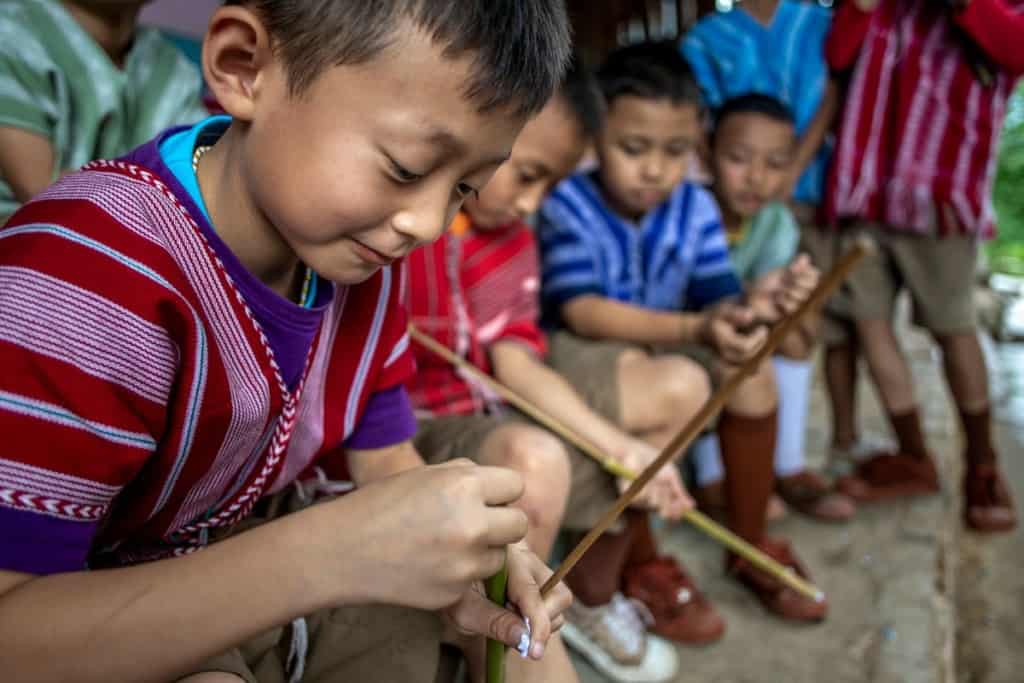
Wheel running: Another traditional Karen game uses old tires and bamboo sticks. Children use the sticks to push their tires, moving from point A to point B and back again to point A. If their tire falls over, they must start from the beginning. Whoever finishes with their tire still rolling wins!
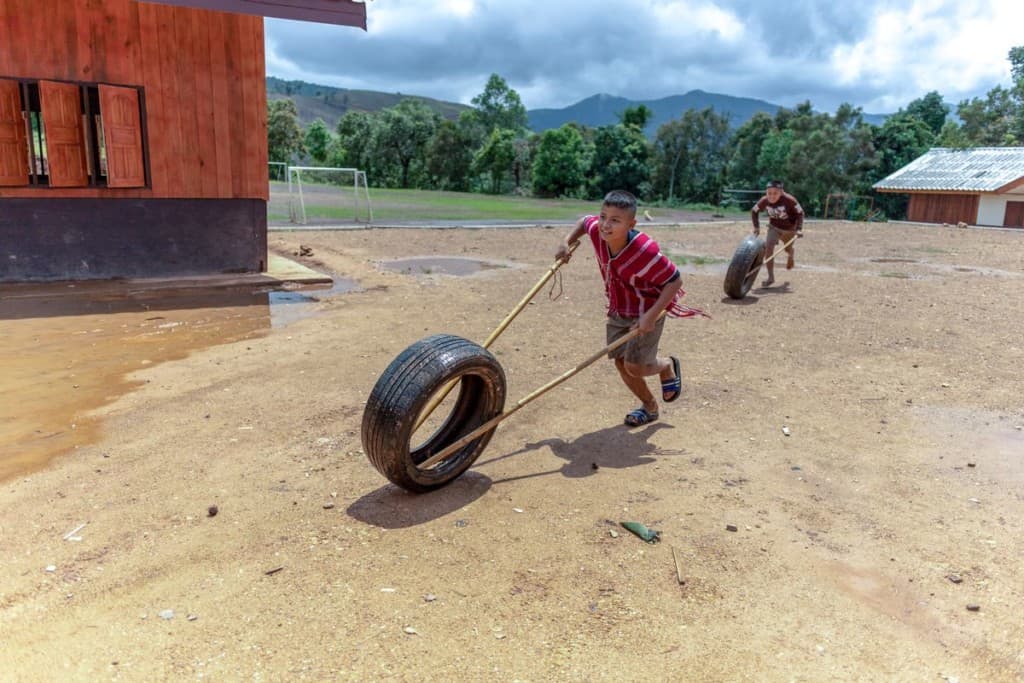
Daw-tou-luu: This is a traditional game to play during the Hmong people’s New Year festival. Men in every Hmong home carve their own daw-tou-luu, which is a lightweight wooden top 1-2 inches in diameter and 5 inches long. A rope is coiled around the top’s axis.
Each child holds their daw-tou-luu with one hand and holds a stick tied to the rope with their other hand. The top is thrown, and the stick is pulled to uncoil the rope and make the top spin rapidly.
Two players play at a time, with the aim of both keeping their top spinning longer and trying to knock down the other player’s top. The first daw-tou-luu to drop loses.
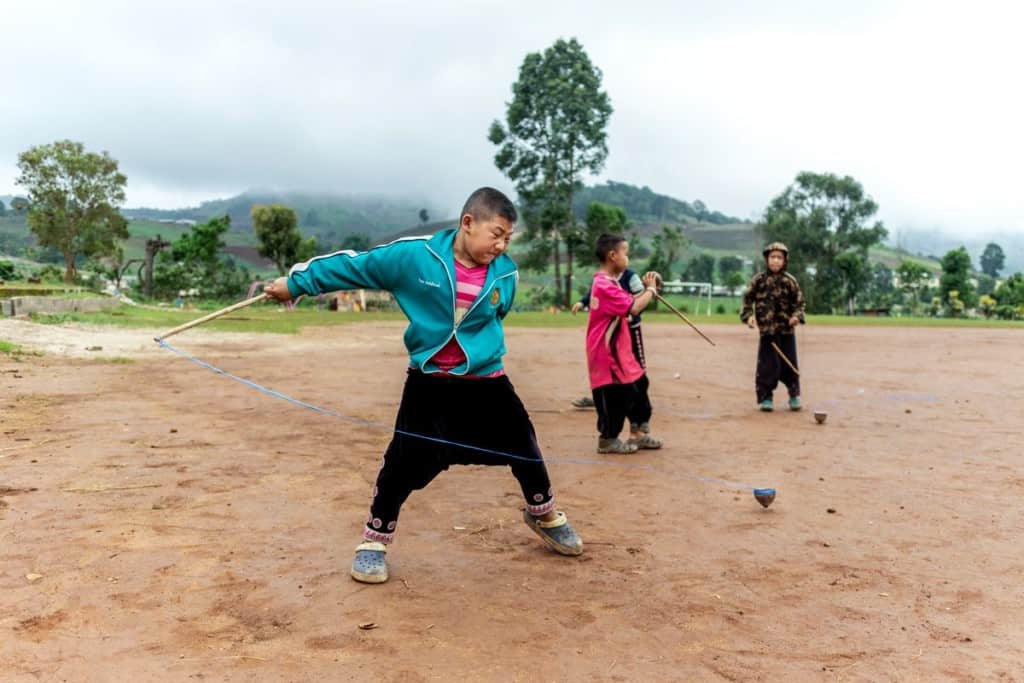
In Indonesia, Children Play …
Bola bekel: This traditional Indonesian game is similar to jacks and can be played with three to five players. You need a ball, which is called a bekel ball, and six small seashells.
First, put all the seashells and the bekel ball in the palm of one hand. Throw the ball up and spill the seashells. While the ball is in the air, pick up one seashell. The ball can only bounce once while picking up the shells.
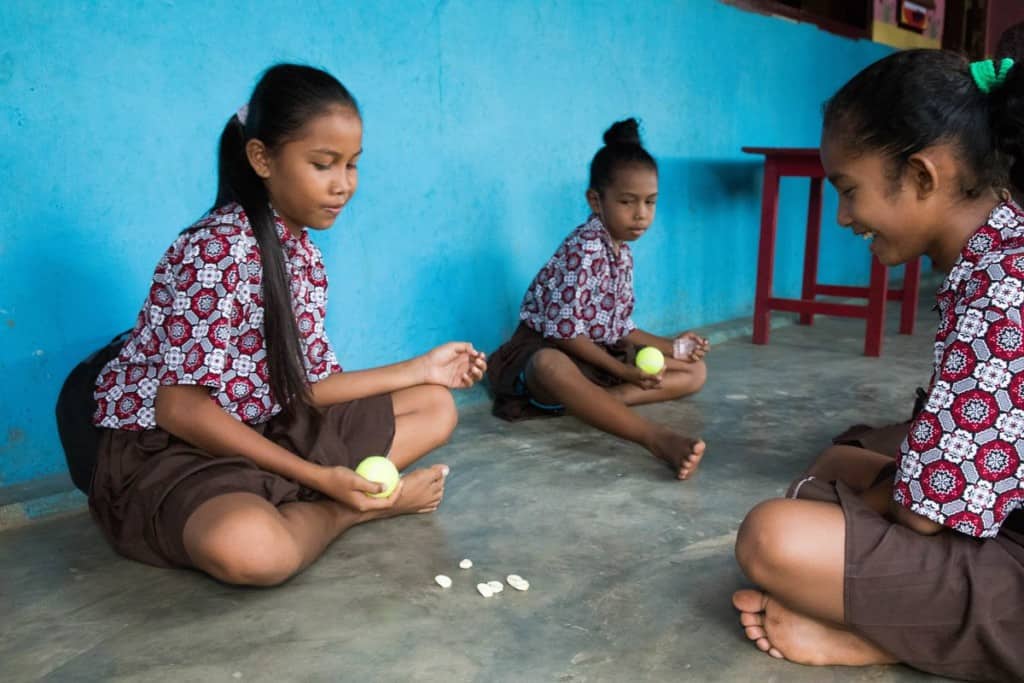
Boi-boi: You need at least four players divided into two teams to play this game, which is like bowling. One team tries to stack a collection of coconut shells into a tower, while the other tries to hit and knock down the tower with a ball.
The throwing team also tries to hit the players on the building team. If a player is hit by the ball, they have to stop building the tower until the next turn.
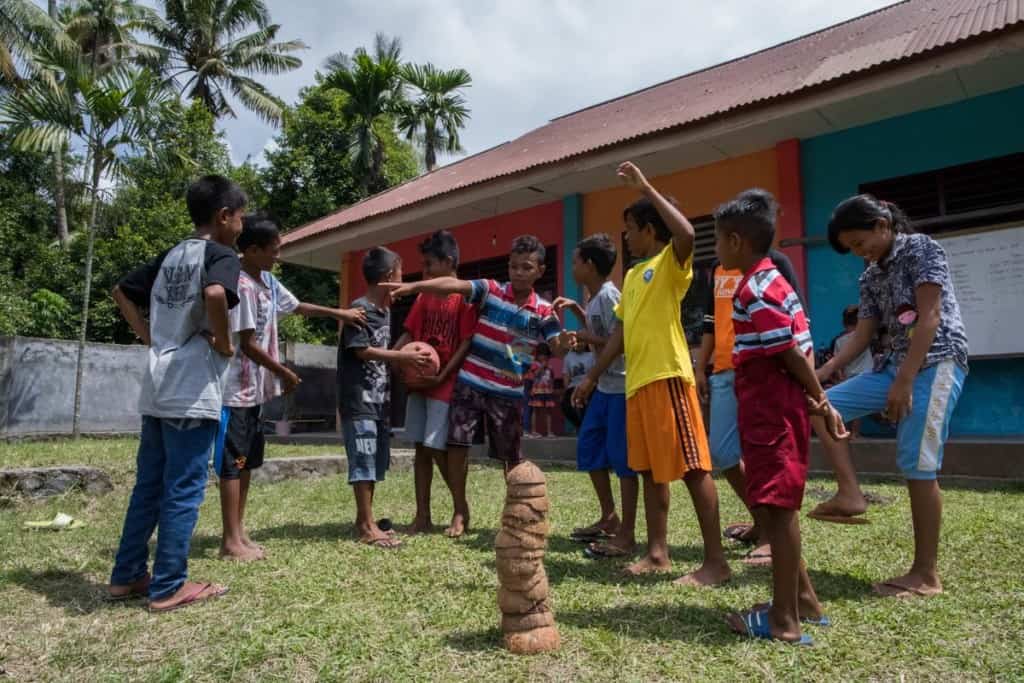
How to Teach Your Kids During Play
Playing traditional games from around the world is a wonderful way to teach children about diverse cultures.
Start by telling them about the country, showing them where it is on a map, and looking at pictures of the landscape, clothing and food. Then play a game from that country together. [NL1]
Your children may even combine aspects of games from other countries with some of their own favorites to create new games!
As you play, talk to your kiddos about what life is like for other children in these countries. It’s a great opportunity to educate them on poverty and how it affects other children. For excellent resources such as stories and recipes you can use, check out Compassion Explorer.
Learn More About Countries Around the World
Want to learn even more about other countries? See what countries we serve and unique facts about each!
[NL1]Maybe not relevant for this update, but do we want to mention something about them teaching their kids what life is like for many who live in that country? It could be an easy segway to teaching about poverty, and we could link to Explorer.
Reporting and photos of games children play in Asia by: Vera Aurima in Indonesia, Edwin Estioko in the Philippines, J .Sangma in Bangladesh and Piyamary Shinoda in Thailand.

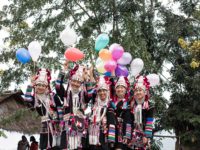
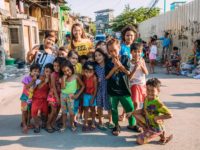




1 Comment |Add a comment
It is so refreshing to see that even though their surroundings and lives are so different from ours, and their situations can be so difficult and challenging, kids are still kids the world over. Cultural differences or not, many of these games sound similar to things we play here. They may have to spend hours collecting water, and cook bare necessities over an open pit fire, but they still run around shooting spitballs and spinning tops. It makes me smile. Children are so precious!